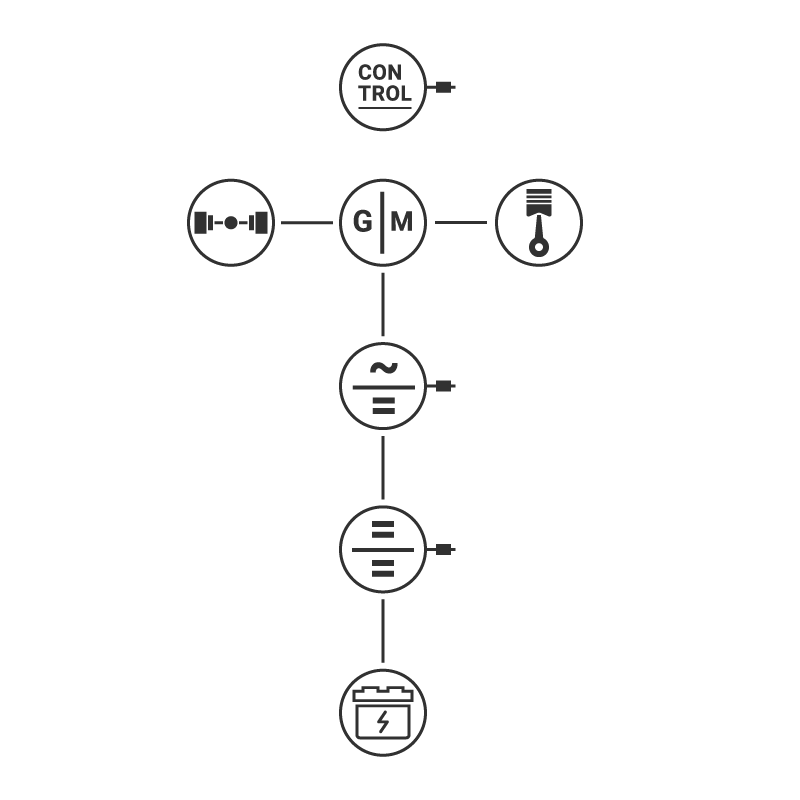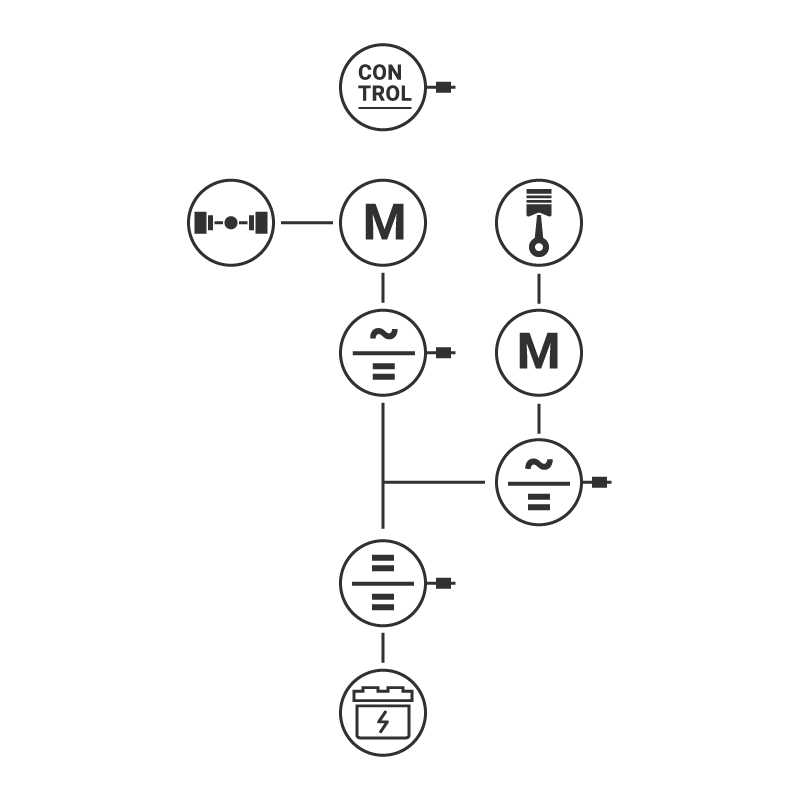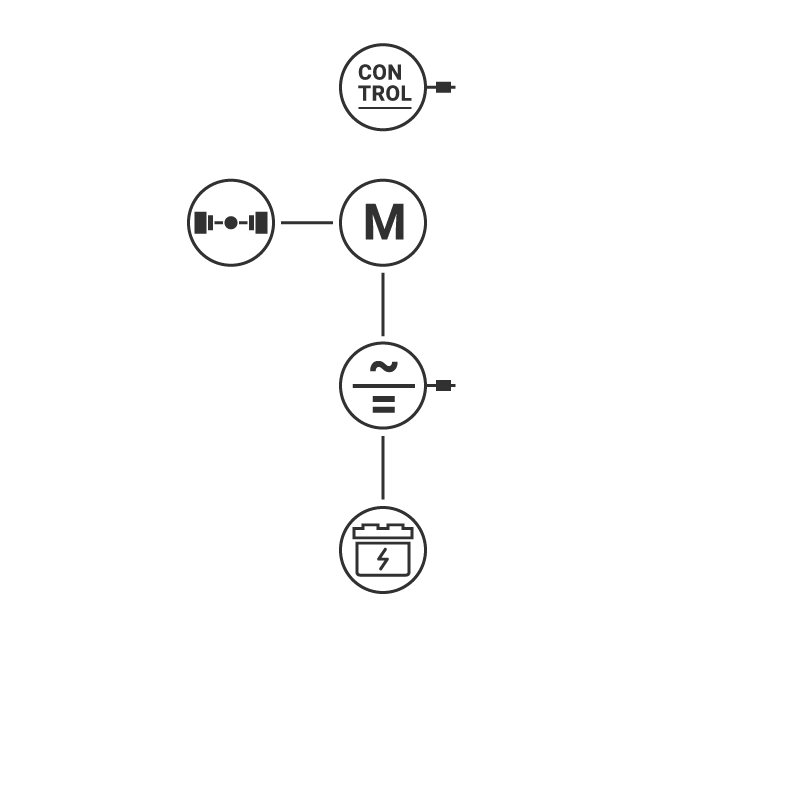- Hydraulic hoses
- Hydraulic pipes
- Industrial hoses and couplings
- Machines and tools
- Motors and steering units
- Oil coolers
-
Pipe clamps
- Console clamps heavy series SPGU
- Console clamps light series LPGU
- Flat steel and round steel U-Bolt clamps
- Metal DIN clamps
- Mounting rails and U-bolts
- Piggyback clamps
- Pipe clamps - DIN3015-1 - Standard series
- Pipe clamps - DIN3015-2 - Heavy series
- Pipe clamps - DIN3015-3 - Twin series
- Pipe clamps - Heavy series with rubber bushing
- Pipe clamps - Lightweight series
- Pipe clamps type STF
- Pipe clamps type exhaust, PC
- Pipe feed-through SRF
- Prevention of Crevice Corrosion for stainless pipework
- Rubber clamps
DANFOSS EDITRON
FULLY ELECTRIC OR HYBRID EDITRON SYSTEM
EDITRON is the world's most sophisticated electric drivetrain, designed and manufactured by Danfoss Editron. Danfoss' unique approach provides maximum efficiency while reducing weight and size. The software manages and optimizes each component of an electric or hybrid drive, leading to more intelligent power consumption management.

EDITRON ON-HIGHWAY
There are many advantages to the EDITRON transport system, which ranges from 30-1000 kW.
The high-efficiency technology reduces fuel consumption and improves operational range, all while emitting zero emissions.
At the same time, the sophisticated control and monitoring software is capable of self-diagnosis and constantly monitors vehicle characteristics. It reports, among other things, on engine temperature and remaining mileage.
In addition, the available torque increases during acceleration, improving performance over traditional internal combustion engines.
EDITRON OFF-HIGHWAY
The demand for electric and hybrid machines is growing, which is why Danfoss' broad product portfolio can help make you a leading player in the 'Off-highway' market.
The system offers outstanding efficiency and is designed to work in harsh operating conditions such as mining, construction, and marine. The off-highway power range covers 30-1000 kW.


LOW VOLTAGE SERIES
Danfoss' low-voltage series offers system solutions for low-voltage customers, enabling them to fully leverage the benefits of electrification.
These solutions are tailored for a variety of hybrid and electric off-highway machines, such as scissor lifts, mini wheel loaders, and mini excavators.
The low-voltage series addresses common challenges faced by OEMs, including enhancing productivity, ensuring cost efficiency, and achieving sustainability goals.
EM-PMI
The EM-PMI can act as either a motor or a generator.
The motors are available in various speed and torque ratings:
- EM-PMI with power up to 1,000 kW – high torque with high efficiency.
- EM-PMI project-based machines with power up to 6,000 kW – high torque with high efficiency .
- EM-PMI outer rotor machines with power up to 50 kW – high torque with high efficiency.

PARALLEL HYBRID SYSTEM

In Parallel Hybrid Systems, there is an electrical unit – EM-PMI – that acts as either a generator or motor, depending on the operating state.
The EM-PMI is mounted between the internal combustion engine and the consumer, and the power is transmitted through it. The EM-PMI is connected to the energy storage (battery, supercapacitor) via the inverter. The inverter controls when the energy storage is charged (generator) and discharged (combustion engine).
In combination with an energy storage device, the EM-PMI can support the internal combustion engine under peak loads and be recharged when the internal combustion engine load decreases.
SERIAL HYBRID SYSTEM

A Serial Hybrid System converts mechanical power into electrical power, which is then converted back to mechanical power when torque is needed.
In this system, an EM-PMI is connected to the internal combustion engine, and another EM-PMI is connected to the load (wheels, propulsion, hydraulic pump, etc.). The inverter controls both the EM-PMI and the energy storage (battery, supercapacitor), which are connected between the generator and the load.
In this type of system, the internal combustion engine can run independently of the load. It can be driven at a constant speed at the optimum operating point when torque is needed, and at light load, it can be run at idle or even shut down completely. This operation is made possible with energy storage that controls the load demand from the diesel engine. Both peak loads and start-up can be supplied from the energy storage unit.
The EM-PMI connected to the internal combustion engine can also function as a motor, allowing start/stop functionality.
FULL ELECTRICAL SYSTEM

A Full Electrical System consists of energy storage (battery, supercapacitor), an electrical unit (EM-PMI) driving the load (wheels, hydraulic pump, propulsion, etc.), and an inverter controlling the EM-PMI.
Energy storage is typically charged from the grid and used to carry the current load. The inverter is used to control the EM-PMI running the load.
In full electrical systems, all loads are electrically driven. Energy storage is possible through electric braking or other deceleration functions.
WANT TO KNOW MORE ABOUT DANFOSS EDITRON
Our engineers are on the phone, ready to advise you on the benefits of an electrical and hybrid system